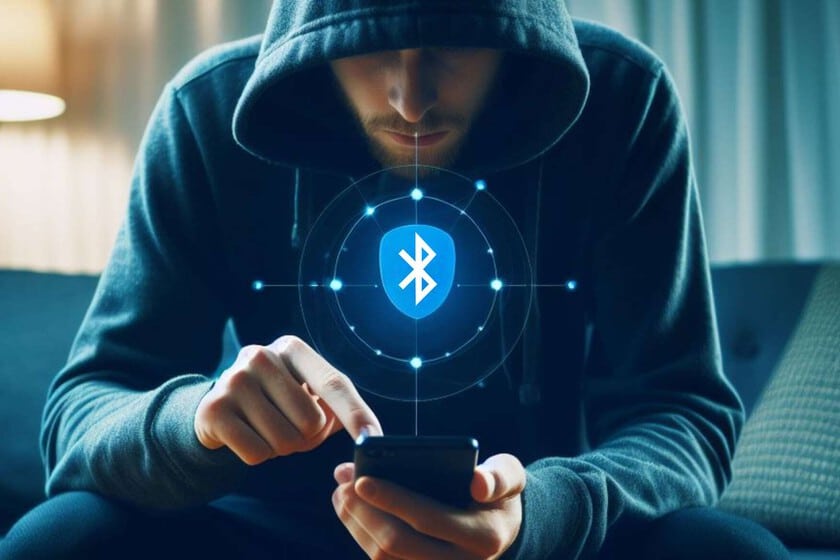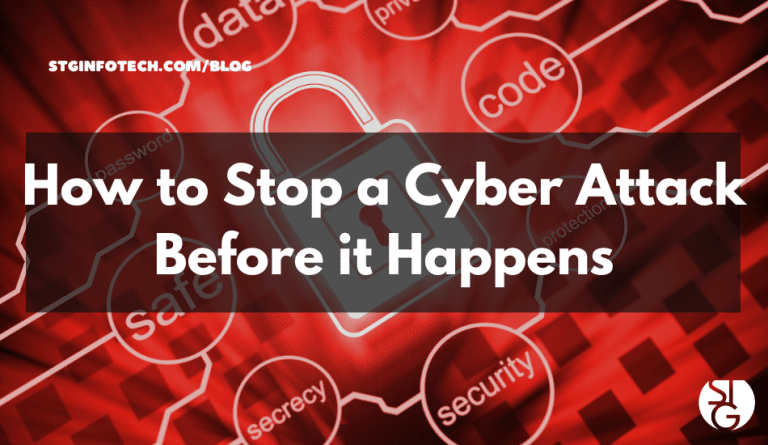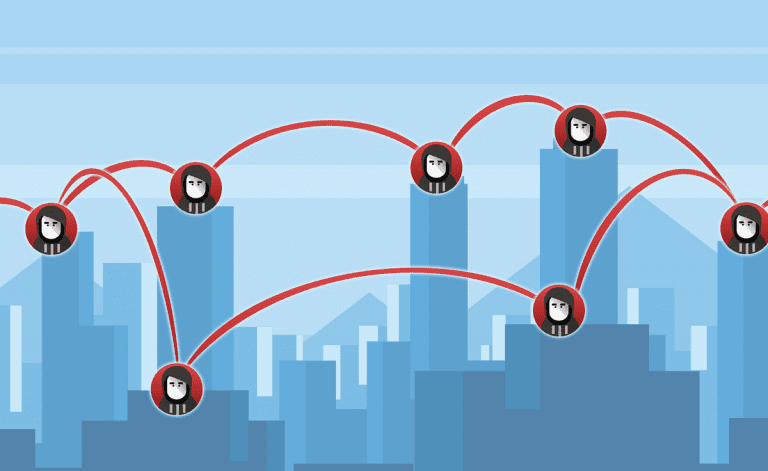As leading LA cybersecurity experts, we understand the unique challenges of staying secure in a city buzzing with tech. Bluejacking, a Bluetooth-based prank, may seem harmless, but it carries risks you need to know. This guide breaks down bluejacking, offers practical defenses, and equips you to stay safe in LA’s connected landscape.
What is Bluejacking?
Bluejacking involves sending unsolicited messages, contacts, or media to Bluetooth-enabled devices, like smartphones or laptops, without the owner’s consent. Unlike malicious attacks, bluejacking typically aims to annoy or prank, exploiting Bluetooth’s ability to push data without pairing. In LA’s crowded spots (think Venice Beach boardwalk or DTLA cafes), bluejackers can target unsuspecting users for a quick laugh or subtle harassment.
Bluejacking thrives in LA’s social hubs, where people leave Bluetooth on for earbuds or smartwatches. While not as dangerous as data theft, it can still disrupt your day or signal bigger vulnerabilities.
What Makes Bluetooth Vulnerable?
Bluejacking exploits Bluetooth’s design flaws, especially in older systems:
- Discoverable Mode: Devices set to “discoverable” advertise themselves to nearby scanners.
- Weak Authentication: Bluetooth’s vCard or OBEX push protocols often skip user verification for small data transfers.
- Short-Range Access: Bluetooth’s 10–100 meter range suits close-proximity pranks in LA’s busy environments.
- User Unawareness: Many users don’t realize their device accepts unsolicited Bluetooth messages.
In our LA IT support business, we see clients using outdated Bluetooth versions (pre-4.0) that lack robust security. Upgrading to Bluetooth 5.0 or higher adds protections that deter bluejacking.
When Was Bluejacking First Detected?
Bluejacking surfaced in 2001 when a Malaysian IT enthusiast, “Ajack,” sent prank messages to a Nokia phone in a bank. This playful exploit spread quickly, gaining popularity as Bluetooth devices became common. By the early 2000s, bluejacking was a global phenomenon, often used for harmless fun but occasionally for harassment.
How a Bluejacking Attack Works
Bluejacking is simple but sneaky:
- Scanning: Attackers use tools like BlueZ or custom apps to find discoverable Bluetooth devices nearby.
- Crafting Payload: They create a message, vCard, or image, often with a humorous or taunting note.
- Sending: Using Bluetooth’s OBEX push, they send the data without pairing or user approval.
- Reaction: The victim’s device displays the message, often prompting confusion or annoyance.
The Potential Impact of Bluejacking Attacks
While less severe than other cyberattacks, bluejacking has consequences:
- Annoyance and Disruption: Unsolicited messages interrupt work or personal time.
- Harassment Risk: Repeated or offensive messages can feel threatening, especially in LA’s diverse social scene.
- Social Engineering: Bluejacking can trick users into engaging with attackers, opening doors to phishing or malware.
- Privacy Concerns: Attackers may glean device names or user details from Bluetooth profiles.
We’ve seen LA clients rattled by bluejacking at networking events, where pranksters send cryptic messages to unsettle professionals. It’s rarely “just a joke” when it erodes trust.
How to Prevent Bluejacking Attacks
Stay ahead of bluejackers with these practical steps:
- Disable Bluetooth: Turn off Bluetooth when not in use, especially in public spots like Santa Monica Pier or Koreatown.
- Set to Non-Discoverable: Make your device invisible to scans in Bluetooth settings.
- Update Devices: Use Bluetooth 5.0 or later for improved security protocols.
- Reject Unknown Transfers: Decline unsolicited Bluetooth prompts or messages.
- Monitor Settings: Regularly check paired devices for unfamiliar entries.
- Use Security Apps: Install tools like Malwarebytes to flag suspicious Bluetooth activity.
- Stay Alert: In LA’s social venues, watch for unusual device behavior, like unexpected pop-ups.
We recommend Bluetooth security training for employees, especially those working remotely in cafes or co-working spaces. A quick settings check can block bluejackers.
Bluejacking vs. Bluesnarfing
Bluejacking and bluesnarfing both target Bluetooth but differ in intent and impact:
- Bluejacking: Sends unsolicited messages for pranks or annoyance, without stealing data.
- Bluesnarfing: Maliciously extracts sensitive data, like contacts or emails, by exploiting protocol flaws.
- Key Difference: Bluejacking is disruptive but not destructive; bluesnarfing causes serious privacy and financial harm.
Bluejacking might seem like a bar prank, but bluesnarfing is a criminal act. Treat any Bluetooth intrusion as a warning to tighten security.
Common Devices Targeted
Bluejacking hits devices common in LA’s tech-heavy lifestyle:
- Smartphones: Older Android or iOS models with discoverable Bluetooth are easy targets.
- Laptops and Tablets: Devices in co-working spaces like WeWork are at risk during scans.
- Wearables: Smartwatches and fitness trackers often accept OBEX pushes automatically.
- Headsets and Speakers: Bluetooth audio devices can receive prank messages or vCards.
LA’s fitness buffs and commuters often forget to secure wearables, assuming they’re low-risk. A bluejacked smartwatch can expose your phone to further attacks.
Legal Implications
Bluejacking sits in a legal gray area. While not as severe as bluesnarfing, it can violate laws like California’s Electronic Communications Privacy Act (CalECPA) if it involves harassment or unauthorized access. Proving intent is tough, and most cases go unprosecuted unless they escalate to stalking or threats.
For businesses, bluejacking incidents at corporate events can harm their reputation. We advise documenting incidents and consulting legal experts if harassment persists.
Emerging Bluetooth Threats
Bluejacking is a precursor to more dangerous attacks, like BlueBorne (2017), which exploits Bluetooth to install malware without interaction. As Bluetooth evolves, new vulnerabilities emerge, especially in IoT devices flooding LA’s smart homes and offices.
Early adopters of smart devices face heightened risks. We recommend following CISA alerts to stay updated on Bluetooth threats and patch devices promptly.
FAQ
Can Someone Bluejack My Device Without Me Knowing?
Yes, if your device is discoverable, bluejackers can send messages without your knowledge. Non-discoverable mode blocks most attempts.
How Do I Know If I’ve Been Bluejacked?
Look for unexpected messages, vCards, or pop-ups on your device. Check Bluetooth settings for unfamiliar activity or paired devices.
Can Bluejacking Harm My Device?
Typically, no; bluejacking is annoying but not destructive. However, it can lead to social engineering or phishing if you engage with the attacker.
Is It Safe to Accept Bluetooth Transfers in Public?
No, avoid accepting unknown Bluetooth transfers, especially in crowded LA spots like festivals or malls. They could mask malicious intent.
Bluejacking may seem like a minor nuisance, but it’s a risk worth addressing. By understanding bluejacking and locking down your devices, you can enjoy a connected lifestyle without falling for pranks or worse.
As your local IT support and cybersecurity team, we’re here to guide you – whether it’s securing your tech, training your staff, or troubleshooting incidents. Keep Bluetooth in check and stay one step ahead.




